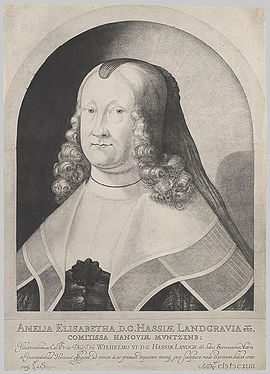- Mezzotint
-
 Sunshine V, mezzotint by Peter Ilsted
Sunshine V, mezzotint by Peter Ilsted
Mezzotint is a printmaking process of the intaglio family, technically a drypoint method. It was the first tonal method to be used, enabling half-tones to be produced without using line- or dot-based techniques like hatching, cross-hatching or stipple. Mezzotint achieves tonality by roughening the plate with thousands of little dots made by a metal tool with small teeth, called a "rocker." In printing, the tiny pits in the plate hold the ink when the face of the plate is wiped clean. A high level of quality and richness in the print can be achieved.
Contents
Dark to light method
This became the most common method. The whole surface (usually) of a metal, usually copper, plate is roughened evenly, manually with a rocker, or mechanically. If the plate were printed at this point it would show as solid black. The image is then created by selectively burnishing areas of the surface of the metal plate with metal tools: the smoothed parts will print lighter than those areas not smoothed by the burnishing tool. A burnisher has a smooth, round end, which flattens the minutely protruding points comprising the roughened surface of the metal printing plate. Areas smoothed completely flat will not hold ink at all: such areas will print "white," that is, without ink. By varying the degree of smoothing, mid-tones between black and white can be created, hence the name mezzo-tinto which is Italian for "half-tone" or "half-painted". This is called working from "dark to light", or the "subtractive" method.
Light to dark method
Alternatively, It is possible to create the image directly by only roughening a blank plate selectively, where the darker parts of the image are to be. This is called working from "light to dark", or the "additive" method. The first mezzotints by Ludwig von Siegen were made in this way. Especially in this method, Mezzotint can be combined with other intaglio techniques such as engraving, on areas of the plate not roughened, or indeed with the dark to light method.
Printing
Printing the finished plate is the same for either method, and follows the normal way for an intaglio plate; the whole surface is inked, the ink is then wiped off the surface to leave ink only in the pits of the still rough areas below the original surface of the plate. The plate is put through a high-pressure printing press next to a sheet of paper, and the process repeated.
Because the pits in the plate are not deep, only a small number of top-quality impressions (copies) can be printed before the quality of the tone starts to degrade as the pressure of the press begins to smooth them out. Perhaps only one or two hundred really good impressions can be taken.
Detailed technique
Plates can be mechanically roughened; one way is to rub fine metal filings over the surface with a piece of glass; the finer the filings, the smaller the grain of the surface. Special roughening tools called 'rockers' have been in use since at least the eighteenth century. The method commonly in use today is to use a steel rocker approximately five inches wide, which has between 45 and 120 teeth per inch on the face of a blade in the shape of a shallow arc, with a wooden handle projecting upwards in a T-shape. Rocked steadily from side to side at the correct angle, the rocker will proceed forward creating burrs in the surface of the copper. The plate is then moved – either rotated by a set number of degrees or through 90 degrees according to preference – and then rocked in another pass. This is repeated until the plate is roughened evenly and will print a completely solid tone of black.
 The first known mezzotint, by Ludwig von Siegen, 1642
The first known mezzotint, by Ludwig von Siegen, 1642
Tone
Mezzotint is known for the luxurious quality of its tones: first, because an evenly, finely roughened surface holds a lot of ink, allowing deep solid colors to be printed; secondly because the process of smoothing the plate with burin, burnisher and scraper allows fine gradations in tone to be developed. The scraper is a triangular ended tool, and the burnisher has a smooth round end – not unlike many spoon handles.
History
The mezzotint printmaking method was invented by the German amateur artist Ludwig von Siegen (1609–c 1680). His earliest mezzotint print dates to 1642 and is a portrait of Amelia Elizabeth, Landgravine of Hesse-Kassel (or Hesse-Cassel) (right). This was made by working from light to dark. The rocker seems to have been invented by Prince Rupert of the Rhine, a famous cavalry commander in the English Civil War, who was the next to use the process, and took it to England. Sir Peter Lely saw the potential for using it to publicise his portraits, and encouraged a number of Dutch printmakers to come to England.
The process was especially widely used in England from the mid-eighteenth century, to reproduce portraits and other paintings. Since the mid-nineteenth century it has been relatively little used. Robert Kipniss and Peter Ilsted are two notable 20th-century exponents of the technique; M. C. Escher also used mezzotint from time to time.
Mezzotint engravers
- Ludwig von Siegen – inventor
- Prince Rupert of the Rhine
- Richard Josey (1840–1906), engraver of James McNeill Whistler's Whistler's Mother.
- M. C. Escher
- Peter Ilsted
- Alexander Hay Ritchie
- T.F. Simon
- Toru Iwaya
- John Sartain
- G. H. Rothe (1935–2007)
- Luke Vehorn
- Francisco Souto
See also
- Prince Rupert of the Rhine, who helped develop the process
 Chisholm, Hugh, ed (1911). "mezzotint". Encyclopædia Britannica (11th ed.). Cambridge University Press.
Chisholm, Hugh, ed (1911). "mezzotint". Encyclopædia Britannica (11th ed.). Cambridge University Press.
References
- Wax, Carol. The Mezzotint: History and Technique (Harry N. Abrams, Inc., 1990).
External links
- The early history of mezzotint and the prints of Richard Tompson and Alexander Browne, from the National Portrait Gallery, London – Good feature on the early history
- The Printed image in the West:Mezzotint – from the Metropolitan Museum of Art timeline of Art History – fuller description & history, with images
Categories:- Engravings
Wikimedia Foundation. 2010.

